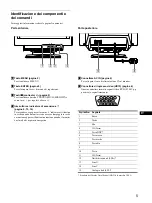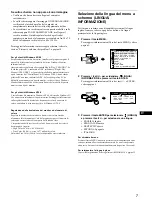
i
Appendix
Preset mode timing table
TCO’95 Eco-document
x
Congratulations!
You have just purchased a TCO’95 approved and labelled
product! Your choice has provided you with a product developed
for professional use. Your purchase has also contributed to
reducing the burden on the environment and also, to the further
development of environmentally adapted electronics products.
x
Why do we have environmentally labelled
computers?
In many countries, environmental labelling has become an
established method for encouraging the adaptation of goods and
services to the environment. The main problem, as far as
computers and other electronics equipment are concerned, is that
environmentally harmful substances are used both in the products
and during the manufacturing. Since it has not been possible for
the majority of electronics equipment to be recycled in a
satisfactory way, most of these potentially damaging substances
sooner or later enter Nature.
There are also other characteristics of a computer, such as energy
consumption levels, that are important from the viewpoints of
both the work (internal) and natural (external) environments.
Since all methods of conventional electricity generation have a
negative effect on the environment (acidic and climate-
influencing emissions, radioactive waste, etc.), it is vital to
conserve energy. Electronics equipment in offices consume an
enormous amount of energy since they are often left running
continuously.
x
What does labelling involve?
This product meets the requirements for the TCO’95 scheme
which provides for international and environmental labelling of
personal computers. The labelling scheme was developed as a
joint effort by the TCO (The Swedish Confederation of
Professional Employees), Naturskyddsforeningen (The Swedish
Society for Nature Conservation) and NUTEK (The National
Board for Industrial and Technical Development in Sweden).
The requirements cover a wide range of issues: environment,
ergonomics, usability, emission of electrical and magnetic fields,
energy consumption and electrical and fire safety.
No. Resolution
(dots
×
lines)
Horizontal
Frequency
Vertical
Frequency
Graphics
Mode
1
640
×
480
31.5 kHz
60 Hz
VGA-G
2
640
×
480
43.3 kHz
85 Hz
VESA
3
720
×
400
31.5 kHz
70 Hz
VGA-Text
4
800
×
600
46.9 kHz
75 Hz
VESA
5
800
×
600
53.7 kHz
85 Hz
VESA
6
832
×
624
49.7 kHz
75 Hz
Macintosh 16"
Color
7
1024
×
768
60.0 kHz
75 Hz
VESA
8
1024
×
768
68.7 kHz
85 Hz
VESA
9
1280
×
1024
64.0 kHz
60 Hz
VESA
(continued)
Summary of Contents for Trinitron CPD-110EST
Page 75: ......




































